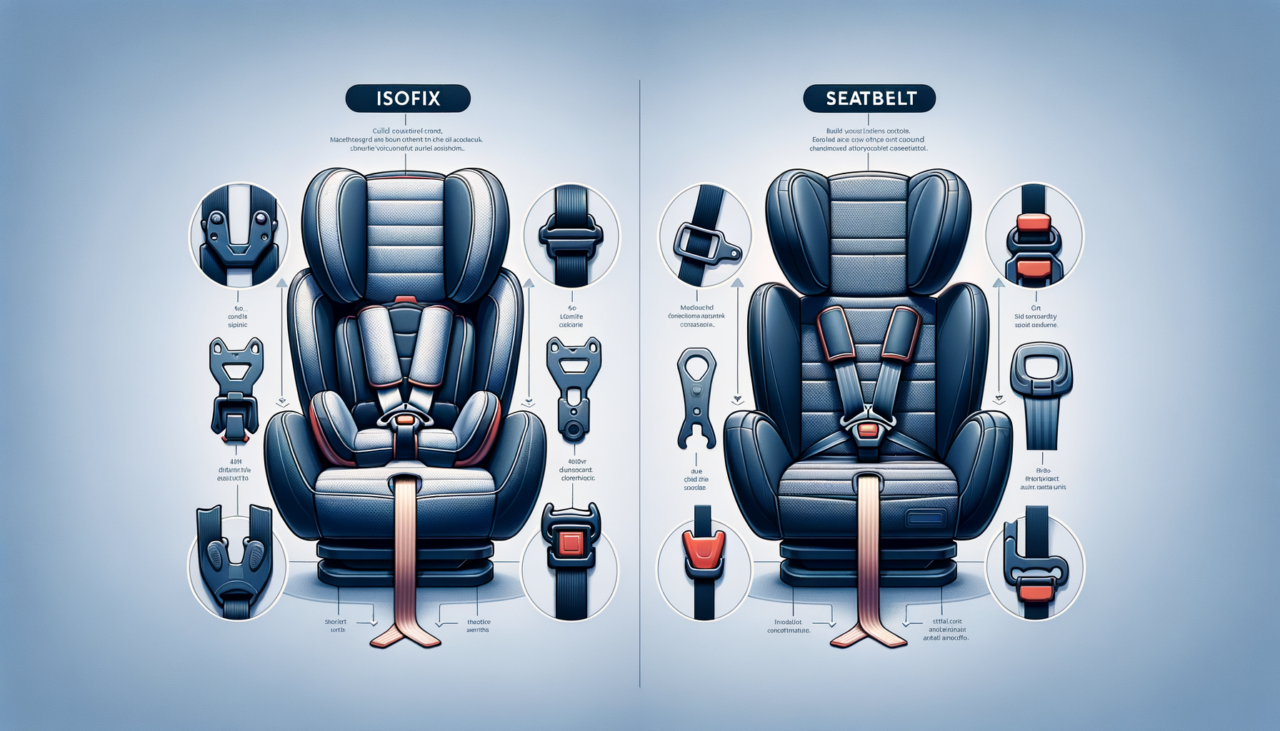G’day folks! Darrin here, your trusted companion on the road of life’s choices, and today we’re diving into the world of child car seats. As a father of three and a data enthusiast, I’ve spent more time than I’d like to admit comparing every aspect of child safety gear. So sit back, grab a cuppa, and let’s explore the nitty-gritty of Isofix and seatbelt installations for child seats. We’ll break down the details with a comparative table and sprinkle in some real-life anecdotes to keep things lively.
Understanding the Basics
Before we hit the road, let’s understand what we’re dealing with here.
Isofix
Isofix is a child seat installation system that connects the seat directly to the car’s chassis using metal arms and anchor points. Imagine it as the seatbelt’s evolved cousin, designed to simplify installation and enhance safety.
Characteristics:
- Ease of Use: Isofix systems are generally considered foolproof, reducing the risk of incorrect installation.
- Safety: Offers a more secure connection since it is directly anchored to the car’s frame.
- Compatibility: While popular in modern vehicles, older cars might not have Isofix points.
- Cost: Typically more expensive due to the technology and manufacturing involved.
Seatbelt
The traditional seatbelt installation method involves securing the child seat with the car’s seatbelt. It’s like the Swiss Army knife of car seat installations—versatile but sometimes a bit tricky to handle.
Characteristics:
- Ease of Use: Can be more complicated to install correctly, but once mastered, it becomes second nature.
- Safety: Provides solid safety when installed correctly but relies heavily on user accuracy.
- Compatibility: Universally compatible with all cars, new or old.
- Cost: Generally more affordable, making it a go-to for budget-conscious parents.
Isofix vs. Seatbelt: The Comparative Table
Let’s lay it all out on the table, shall we?
| Feature | Isofix | Seatbelt |
|---|---|---|
| Ease of Installation | Quick and straightforward, reduces human error. | Requires careful attention to detail, prone to error. |
| Safety | Direct connection to car frame offers superior stability. | Dependent on correct installation for maximum safety. |
| Compatibility | Mainly in newer models, check your car’s specifications. | Universally compatible with any vehicle. |
| Cost | Higher due to advanced technology. | More budget-friendly option. |
| Maintenance | Minimal, just occasional checks on connectors. | Regular adjustments needed to ensure tightness. |
Real-Life Anecdotes
Now, let me share a personal tale from the days of car seat wrestling. Picture this: a sweltering summer afternoon in Brisbane, and there’s me, wrestling with a seatbelt installation. With sweat pouring down my back and my toddler giving me the side-eye from the pram, I was cursing at buckles and straps like a sailor. Fast forward a few years, and I’m clicking an Isofix seat into my new SUV with one hand while sipping a flat white with the other. Magic, right?
The Verdict
So, which one should you choose? If you’re driving a newer car and can stretch the budget, Isofix is your go-to for hassle-free and secure installation. But if you’re playing it smart with a budget or driving an older model, mastering the seatbelt installation can be just as effective.
In the end, both systems have their merits. The key takeaway is ensuring that your child seat is installed correctly, whichever method you choose. So, fellow parents, trust your instincts, do your research, and keep your precious cargo safe on every adventure.
Until next time, happy motoring and may your travels be as smooth as a baby’s bottom!

Comments (0)
There are no comments here yet, you can be the first!